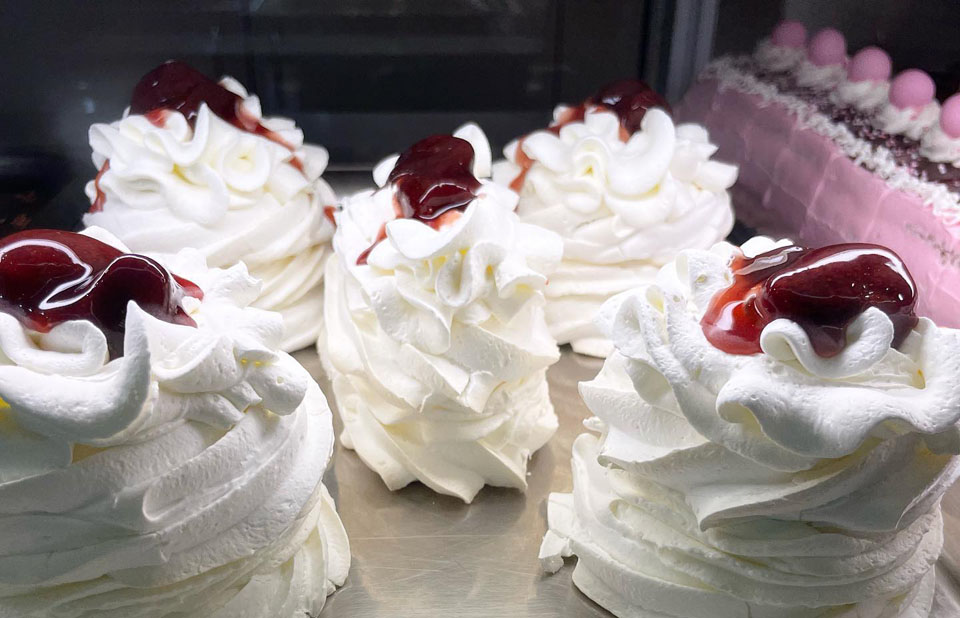Top 5 Tips on How To Make The Perfect Pavlova: a blog about pavlova and an easy to follow recipe.

Introduction
Pavlova is a dessert made from egg whites, sugar and cornflour. It is traditionally topped with fresh fruit and cream. Pavlova is known to be one of the most difficult desserts to make, but it doesn’t have to be! Follow these tips and you’ll soon be whipping up pavlovas like a pro:
Preheat the oven to 150 degrees Celsius
Preheat the oven to 150 degrees Celsius.
- Place the oven rack in the middle of your oven, and preheat it for at least 30 minutes. If your oven doesn’t have a fan, turn it on before you start heating it up.
- For a large pavlova, preheat the oven to 150 degrees Celsius (300 F). For a small one (serving 2-3 people), set that temp at 160 degrees Celsius (320 F). Let the mix cool before putting it into an ovenproof dish or container with high edges (this helps prevent cracking).
Use caster sugar, not superfine sugar.
The difference between caster sugar and superfine is that the former is more coarse, so it won’t stick to a whisk as easily. It also has a higher water content than the latter, which means it dissolves more quickly. This can be helpful when you’re making pavlova meringue because you want to get all of your sugar into your egg whites as quickly as possible.
The main reason I recommend using caster over super fine sugar is because it’s cheaper! I’m not sure why they charge extra for something that isn’t any better than its cheaper counterpart, but I’m not here to judge them—I’m just here to tell you what works best!
Leave the pavlova in the oven until it is completely cool to prevent cracking.
In order to get the pavlova out of the oven, you will need to use a palette knife and run it around the edges of your pavlova. The easiest way for me is to get two icing spatulas, one on each side of the pavlova. I then lift gently up and twist slightly away from me until it has come free from its cooking tin or baking tin. Leave on a wire rack until completely cool (at least 90 minutes).
This is very important as if you take it out too early or before it has cooled down properly there is a risk that your meringue will crack (I know from experience). Also note that once cooled, meringues continue baking so don’t be tempted to eat them immediately!
Ensure the egg whites are room temperature, as they will whip better than cold egg whites
To ensure that your egg whites are as fluffy and airy as possible, make sure they’re room temperature. If you don’t have time to let them sit out, you can put them in a bowl of warm water for a few minutes.
If you are in a rush to get started making the pavlova, consider using a blowtorch to heat up the bowl so that it will be ready when needed!
Whip your egg whites slowly at first, gradually increasing the speed.
When you’re whipping the egg whites, start on a low speed and gradually increase to medium-high. If you go too quickly, the egg whites will not have enough time to trap air and become stiffer. The whites should be well aerated, shiny and glossy.
Follow these tips and your pavlova will be perfect every time!
- Follow these tips and your pavlova will be perfect every time!
- Pavlova is a classic dessert that is simple to make. I’ve been making it for years, so I thought it was about time I shared some tips and tricks with you.
- The recipe is easy to follow, but the tips will help you get the best results.
- The tips are all about the ingredients and how to prepare them:
- Using fresh egg whites – make sure they are super fresh (you can use eggs from 7 days old onwards) or pasteurised eggs as older eggs don’t work as well. If possible, weigh out your egg whites in advance so that by the time you need them they’re at room temperature and ready to go! This helps prevent stiff peaks which can affect the texture of your meringue. If you don’t have scales then separate three large eggs into one bowl each day until you have enough weight of egg white needed for this recipe (if using standard sized free range hen’s eggs). You will also need 2 tbsp caster sugar per yolk removed from 3 large eggs – just dissolve this in 10ml cold water first before adding it into one bowl containing beaten whites followed by another 10ml cold water added straight onto beaten whites without any mixing beforehand – this helps prevent over beating which affects texture too much – if unsure just add 1/2 tsp vanilla extract instead of flavourings until you’ve mastered making perfect meringues 🙂
Conclusion
The next time you make pavlova, be sure to use these tips and tricks for the perfect result. If you follow them carefully, your pavlova will come out beautifully every time!

